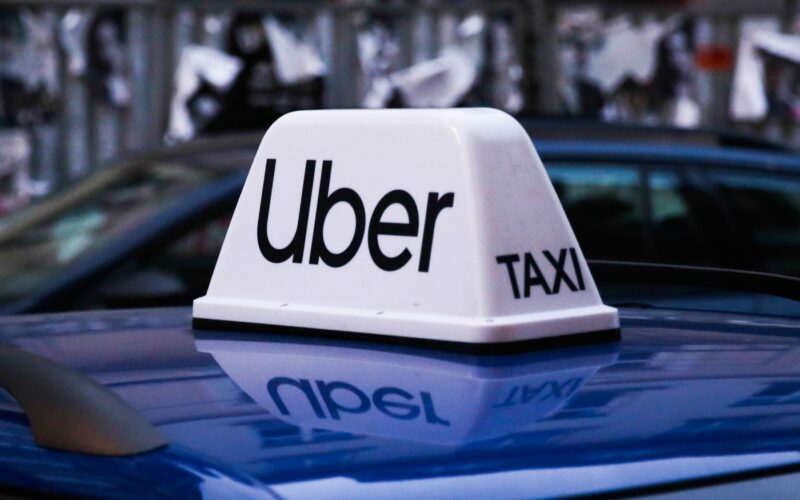Uber is one of the most well-known private corporations in the United States, and it uses Uber technology to allow customers to order rides through a mobile app. Client requests are received by Uber Technologies Inc., which then forwards the same requests (along with location and final destination) to drivers who are nearest to the customers. As a result, drivers must use smartphones as one of their operational instruments. Uber Technologies Inc has dominated the business as a prominent and enormous cruise corporation since its founding in 2009. Uber has expanded its activities to over 60 countries thanks to the rise of new technology and the surge in mobile connectivity. This article will outline some of Uber’s international competitors who are also attempting to profit from the evolving technology. It will also list uber competitors in the USA and new competitors against Lyft and Uber
List Of Top Uber Competitors in 2023
The following list of Uber competitors is a list of Uber Technologies Inc.’s direct competitors. Therefore a slight downturn in Uber Technologies Inc.’s value and services will inevitably reduce the company’s dominance over its competitors.
#1. Lyft Uber
Lyft, like Uber, lets users view a map from their smartphone app. The rider can track their ride in real-time by indicating their location.
Lyft is founded in California and operates in 300 states, giving 18.5 billion trips every month; as of mid-2017, its market capitalization was 7.5 billion dollars.
And though it does not have the same influence as Uber, Lyft is the most popular Uber competitor in the United States. It has grown in popularity since its launch in 2012, thanks to its fuzzy pink mustaches that can be seen on the dashboards and front of the car. This transportation firm makes it easier for consumers to find rides by making it easier to recognize them. It provides services in over 220 cities around the country, including Vietnam, the Philippines, Thailand, Singapore, Malaysia, and Indonesia.
Lyft’s operations are comparable to Uber’s in that users can view a map via a smartphone application. They can then use this information to indicate their position and track their ride.
#2. Curb
Initially, the curb App was dubbed ‘Taxi Magic.’ After it was re-launched by VeriFoneSystems, the current proprietors, the name was changed to ‘curb.’ VeriFone Systems, based in San Jose, operates the majority of New York’s green and yellow taxis.
The curb taxis are forced to utilize VeriFone’s entertainment systems and credit card machines because the corporation also administers the taxi payment systems. Around 14,000 green and yellow cabs had passed that minimum requirement by the end of 2016, making it one of the top Uber competitors.
When using the Curb App, manufactured by Creative Mobile Technologies (CMT), a fee of roughly 1.95 dollars is charged each time it is used to book a cab. It also gives drivers ratings and alerts them to potential excursions. Since its launch in 2015, VeriFone’s goal has been to deliver Curb to every major city in the United States.
#3.Via
Unlike Uber, Via is recognized for offering more localized services, such as in Washington, DC, Chicago, Seattle, and New York City. It is cost-effective for passengers because it is available for passengers traveling in the same direction but to various destinations. This helps drivers to maximize their revenue while keeping passenger costs to a minimum.
Via was launched in 2012 and currently has its headquarters in New York
#4. DidiChuxing
DidiChuxing, formerly DidiKuaidi, is a Chinese ride-sharing company that uses its app to provide services such as DiDi Chauffeur, Didi Test Drive, taxi-hailing, DiDi Minibus, and DiDi private automobile rental.
In 2015, there were 1.4 billion rides, a new high. In comparison to other companies in the same industry, this figure was exceptionally high.
Uber comes the closest, having completed a billion rides in the six years since its inception in 2009. This company began with the merger of KuaidiDache and DidiDache.
At the end of 2016, the corporation’s valuation was 28 billion dollars. Thereafter that year, it bought the Uber unit in China.
In mid-2017, Dodichuxing released a new English-language App in anticipation of expanding its services overseas.
DiDi is the most valuable firm of the year, with a market capitalization of more than $50 billion and over 100 investors on board.
Didi is the only Chinese startup with investments from China’s three top internet companies, Tencent, Baidu, and Ali Baba.
DidiChuxing is one of Uber’s main competitors in the region, with a large Chinese and Asian population.
#5. Ola Cabs
Ola Cabs began as an application-based transportation startup in Mumbai in 2010 as an online cab aggregator. Ola’s network spans India, Australia, New Zealand, and the United Kingdom(169 cities), with over 100,000 cars dispatched each year.
The first launching of the Bangalore-based ‘Ola’ transportation company was in Mumbai in 2010. By the end of 2015, Ola had a value of more than $5 billion, and its total sales estimate is at $150 million.
Ola, a competitor to Uber, provides a wide range of cab services via its smartphone app.
Depending on their tastes, users can choose from a variety of services ranging from luxurious to low-cost. The company takes both cash and digital payments.
Ola also launched its rental and outstation services, allowing customers to rent cars by the hour or pre-book cabs.
Presently, the company has over 600,000 automobile networks in over 110 cities. Travelers can book low-cost or high-end travel via mobile apps.
Ola has a market share of more than 60% in India, with around 150,000 bookings every day. She is currently working on artificial intelligence (AI) technology to compete with Uber in India’s $12 billion markets.
Ola is a major Uber competitor in India since it has a far better understanding of the Indian market than Uber.
#6. Grab
Grab is a Singapore-based firm that offers a variety of logistics and ride-hailing services in Asia, including the Philippines, Vietnam, Malaysia, Indonesia, and Myanmar, via its mobile app. It launched a texting option on its app toward the end of 2016, allowing riders and drivers to communicate.
Language translation was also made possible via the messaging service, removing the previously existing language barrier. It has over one million drivers registered on its network by June 2017, and its App had been downloaded and installed on over 45 million devices in South Asia. its services are currently accessible in 30 cities across 6 countries.
the first launch of Grab was in 2012 and now has its headquarters in Singapore.
#7. Gojek
Gojek’s first launch was in 2010 and now has its headquarters in Jakarta, Indonesia. GO-JEK is a well-known ride-hailing service that competes with Uber. By cooperating with drivers, the organization is able to deliver a varied range of services.
Customers can order food, pay for it, and receive logistics, travel, and other on-demand services by connecting with driver-partners. Indonesia, Vietnam, Thailand, Singapore, and the Philippines are among the countries where Gojek is operational.
#8. Bolt(Taxify)
Bolt is a Tallinn-based European ride-hailing company. Taxify is another name for this application. Since its inception in 2013, it has developed at a dizzying speed.
The corporation has marketplaces in 34 countries and over 150 cities after just six years of market expansion in Africa, Europe, and America.
Bolt often charges its customers less and pays its drivers a bigger commission than its competitors.
According to Bolt’s database, the company has over 25 million app users and over 500,000 drivers providing transportation to its consumers across the world. At the end of 2018, they had annual revenues of 79.7 million euros.
#9. Cabify
Cabify is regarded as the safest taxi service in the market. Modern cars, professional drivers, and geo-tracking help to give best-in-class services. It also allows customers to maintain control over their choices when traveling. Cabify also has a plain and open pricing model. Cabify is available in a number of countries, including Spain, Mexico, Chile, Brazil, Peru, Argentina, and Portugal.
#10. Snapp
Snapp is known as Iran’s “Uber,” with over 1.5 million drivers and a presence in 34 cities. It is one of Iran’s most popular ride-hailing apps, with features such as groceries and meal delivery as well as a travel booking app.
#11. Yandex Taxi
Yandex Taxi is a Russian multinational information technology firm that provides ridesharing and food delivery services in Russia, Eastern Europe, Africa, and the Middle East. It is also one of the world’s foremost businesses working on the development of self-driving vehicle technologies.
Yandex taxi first launching was by Yandex N.V., a Russian multinational firm that offers more than 70 online services to its users in numerous countries across the world.
Yango is the brand name that Yandex cab uses to market and operate its services. According to Yandex data, the app is used by 36 million people, and it has completed roughly 1 billion rides by the end of 2018. Yandex employs over 700,000 truck drivers. Russian Uber is another name for it. Yandex, like Uber, offers its users the option of having meals delivered to them
Top Indirect Uber Competitors
Local Taxis
This tops the list of uber competitors in the market. Taxis are Uber’s indirect competitors. Every major city has a specific location where local taxis wait for passengers. Stations, ferry terminals, hotel roads, and airports all pass through these zones, which see a lot of traffic.
Local taxis operate on a first-come, first-served basis. He was first in line since a taxi was the first to arrive. The incoming passenger is first in line, with others behind him or her moving up one position. In other nations, the restriction does not apply, and the passenger is free to choose any Taxi from the available possibilities.
Local taxis, who may negotiate transportation rates with clients, compete fiercely with Uber in the transportation industry.
They are, however, run by entrepreneurs who are not looking for profits, but rather a small sum of money to support car maintenance and survival.
Public Transport
Being the second on the list of uber competitors, they are a less expensive mode of transportation as compared to taxis in most nations that provide mass or shared transit.
You have the option of taking the bus, rail, tram, ferry, or any other mode of transportation. Various countries have different public transportation systems. In Asia, it is controlled by both public and private corporations. In North America, the Municipal Council is in charge, but in Europe, the private and governmental sectors work together.
Transportation expenses do rise with distance; the further one goes, the more one pays; yet, transportation remains affordable due to the enormous number of passengers who alight at virtually every destination and the lack of private arrangements. In several developed countries, government tax revenues fund this mode of transportation, making it accessible in large cities. The International Association of Public Transport (UITP), created in 1934 as a membership organization, governs public transportation in nearly 100 nations across the world.
Despite their low cost, most public transportation vehicles have pre-determined routes for dropping off and picking up passengers. They are also vulnerable to injury and suffering as a result of the throng.
The trucks don’t leave the station until they’re completely loaded. All of these issues have been resolved thanks to Uber cabs.
Furthermore, Uber cars must meet a minimal quality requirement in order to deliver the best possible service to its consumers. Maybe that’s why, in this very competitive transportation sector, they’re still riding high.
Lyft Uber Competitors
Lyft, a primary competitor of Uber out of other competitors in the USA, is now available almost everywhere in the world and prioritizes speed and convenience over anything else. Several competitors to Lyft uber in the USA, such as Curb and mytaxi, make it easier to hail regular taxis. Other Lyft uber competitors, such as Juno, operate their own fleets of cars while promoting lower costs.
The list below is the six most prominent uber competitors of Lyft.
- Uber
- Curb
- Mytaxi (previously Hailo)
- Flywheel
- Juno
- Easytaxi
Uber Competitors In the USA
As already said one of the uber major competitors in the USA is Lyft however, there rising competitors coming up recently some of which we’ve highlighted earlier in this post.
Below is the list of competitors that are directly coming after Uber in the USA.
- Lyft
- Didi
- Olacabs
- Careem
Conclusion
Conclusively, The number of modes of transportation available to you is increasing and now you have more ways to get where you need to go without stress. If you’re also looking to start an uber business you will need this guide and also make a further study on what and what you need to do while studying their business mode of operation.
FAQs
Who is Uber’s main competitors?
Lyft is the most popular Uber competitor in the United States, although it doesn’t have the same reach as Uber.
What makes Uber different from competitors?
Another source of competitive advantage could be its avoidance of regulation. Uber uses noncommercial cars, its drivers avoid costly commercial insurance, taxi medallions, and other expenses that provide Uber service a cost advantage over traditional taxi services
Are there other companies like Uber?
Lyft. The most obvious USA Uber competitor is Lyft out of other competitors, with a service that works quite similarly. Like Uber, the app lets you hail a car and see how far away it is on the map. The prices are comparable — sometimes it’s less than Uber, sometimes it’s more.
Are there alternatives to Uber and Lyft?
You’re probably familiar with Uber and Lyft but might not have heard of lesser-known apps like Curb, Gett, or Wingz. These apps provide you with different options for requesting rides, finding a carpool in your area, or hailing taxis.
{
“@context”: “https://schema.org”,
“@type”: “FAQPage”,
“mainEntity”: [
{
“@type”: “Question”,
“name”: “Who is Uber's main competitors? “,
“acceptedAnswer”: {
“@type”: “Answer”,
“text”: “
Lyft is the most popular Uber competitor in the United States, although it doesn’t have the same reach as Uber.
“
}
}
, {
“@type”: “Question”,
“name”: “What makes Uber different from competitors?”,
“acceptedAnswer”: {
“@type”: “Answer”,
“text”: “
Another source of competitive advantage could be its avoidance of regulation. Uber uses noncommercial cars, its drivers avoid costly commercial insurance, taxi medallions, and other expenses that provide Uber service a cost advantage over traditional taxi services
“
}
}
, {
“@type”: “Question”,
“name”: “Are there other companies like Uber?”,
“acceptedAnswer”: {
“@type”: “Answer”,
“text”: “
Lyft. The most obvious USA Uber competitor is Lyft out of other competitors, with a service that works quite similarly. Like Uber, the app lets you hail a car and see how far away it is on the map. The prices are comparable — sometimes it’s less than Uber, sometimes it’s more.
“
}
}
, {
“@type”: “Question”,
“name”: “Are there alternatives to Uber and Lyft?”,
“acceptedAnswer”: {
“@type”: “Answer”,
“text”: “
You’re probably familiar with Uber and Lyft but might not have heard of lesser-known apps like Curb, Gett, or Wingz. These apps provide you with different options for requesting rides, finding a carpool in your area, or hailing taxis.
“
}
}
]
}






